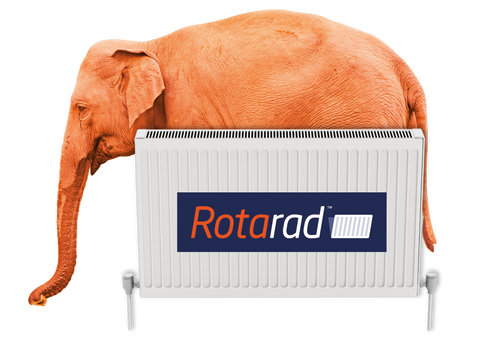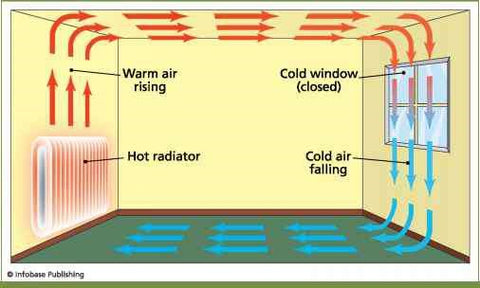
The Importance Of Cleaning Your Radiators
When cleaning our homes, the majority of us do not recognise the “Elephant in Our Rooms”, the radiator, as they visually look clean, giving us a false impression that they do not necessarily require cleaning!

But if you had access to see what could be concealed behind and in between your radiators it could literally shock you!

Central Heating Radiators are a fixed part of the fabric of our homes, that have a vital role to play providing warmth and comfort during the cold winter months for the wellbeing of millions of occupants.
So, What's Changed? Indoor Environment!
It's important that we are aware of and understand the level of influence radiators now have on our wellbeing.
Especially when used in modern and refurbished older properties that have significantly changed the environments in which they are now used as a result of poor ventilation.

When using our radiators in these environments the heat convection process becomes the main source of airflow around our homes.
This increases the risk of dust particles being circulated and suspended that are inhaled in the air we breathe.

Over time radiators that are not deep cleaned or removed to decorate will accumulate reservoirs of dust.
This dust hosts an array of consumer product chemicals, toxins and allergens used in our homes.
These are termed as VOC’s (Volatile Organic Components), that can have adverse effects for vulnerable occupants when inhaled in the air we breathe indoors
See below some products:
- Furniture
- Electronics
- Vinyl Flooring
- MDF/Plywood
- Insulation Materials
- Cleaning Products
- Air Fresheners
- Hair Sprays etc.
Why You Need To Clean Behind Your Radiator
Allergy UK estimates that at least 12 million people are allergic to their own homes.
Even cleaning in your home and also not forgetting the radiators, you could be making matters worse when using leading brands of chemically-based cleaning agents.
Manufacturers state that using their products on certain services, they can be hazardous!
That is why it is advisable not to use chemically based cleaning agents on radiators as they become hot surfaces when in use.

High humidity can raise the concentration of VOC’s without adequate ventilation.
When drying laundry washed in detergents and fabric softeners even though they smell fragrant and fresh, this too could trigger adverse reactions for some vulnerable occupants.
Even when you dry laundry that is washed with non-chemical detergents on radiators and airers, this can also have a detrimental impact on the home environment.
This can be responsible for up to a third of condensation in our homes encouraging allergens such as mould spores and dust mites to flourish.
See Daily Mail article - How your cosy home can raise your risk of allergies
See Blog – Are Dust mites harmful
See Blog- Do Radiators Circulate Allergens
Cleaning central heating radiators to improve hygiene and indoor air quality standards is becoming an important factor for all occupant’s wellbeing.
As a result of global warming measures being taken by the government to make homes carbon neutral by 2050.
See Blog - Accessible Clean Radiators – Climate Change
See Blog – How Radiators can effect Indoor Climate Change
How To Properly Clean Behind Your Radiators
When cleaning radiators we recommend you do not use chemically-based cleaning agents.
Step 1. Using a filtered vacuum cleaner to remove the excess of dust and to capture disturbing dust particles to reduce exposure when cleaning would be the ideal method and the most convenient.
Step 2. Use a damp cloth to wipe the exposed surfaces of the radiator to remove any remaining fine dust particles and any marks that have accumulated over a period, using just clean lukewarm water.
This would be sufficient to maintain hygiene in the home; it is recommended that at least one deep clean once a year prior to the first use in the Autumn/Winter period.
Step 3. The use of a handheld steam cleaner could be beneficial in a more clinical environment if required to combat bacteria exposure.

How To Easily Remove The Radiator From The Wall
The above image illustrates a radiator installed with a Rotarad Radiator Removal Kit, this allows the radiator to be dropped parallel to the floor in seconds.


